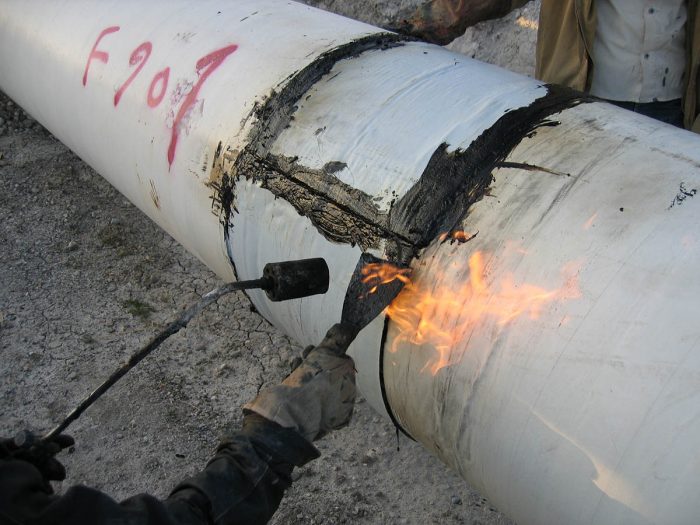Bituseal Enamel

Product Description of Bituseal Enamel
The Bituseal Enamel is based on a specially selected bitumen, modified with high-performance engineering polymers. This polymer modification ensures improvements of a number of the product’s qualities, e.g. flexibility, adhesion, and durability. It is supplied in different types/grades, depending on the varying requirements for corrosion protection materials for pipelines.
Application of Bituseal Enamel
It is applied to steel pipes, previously primed with Bituseal Primer, at 190-230°C using computer-controlled extrusion technology, which ensures an optimum coating quality. Optimum adhesion and bleed-through are obtained when the pipe surface temperature prior to coating is 30-50°C. However, the minimum surface temperature is 15°C and 3°C above the dew point. Minimum enamel thickness is 4.0mm
Storage
Heated Bituseal Enamel is to be stored under constant low-speed stirring. Storage temperature and duration depends on the Bituseal grade stored.
Standards
It meets or exceeds all the performance requirements of EN 10300.
Quality Control
All raw materials for Bituseal Enamel are tested and approved in the laboratories of RAHA BITUMEN Co. The quality of the finished enamel is controlled to either EN 10300 or the costumer’s specific requirements and a quality certificate is issued for each batch produced.
Bituseal Coatings
Bituseal Enamel is suitable for pipelines operating at temperatures in the range –30°C to 90°C. The enamel is environmentally safe.
Mechanical Protection
A polypropylene shield can be applied to the Bituseal coated pipe in order to obtain improved mechanical protection of onshore pipelines.
Delivery
Bituseal Enamel is available cold in 20 kg block or hot in bulk.
Technical Data of Bituseal Enamel category 2, Grade b
| Properties | Unit | Requirement | Method of test |
| Softening Point | ºC | 110 to 130 | EN 1427 |
| Penetration | 0.1 mm | 5 to 17 | EN 1426 |
| Density at 25 ºC | g/cm3 | 1.2 to 1.4 | EN 10300, Annex L |
| Filler Content | % | 25 to 35 | EN 10300, Annex K |
| Flash Point | ºC | Min 260 | EN/ISO 2592 |
| Sag at 75 ºC, 24 h | ºC | Max 1.5 | EN 10300, Annex D |
| Impact disbonded area @25ºC |
mm2 | Max 6500 | EN 10300, Annex E |
| Peel Initial / Delayed at
30 ºC 40 ºC 50 ºC 60 ºC |
N/20mm |
50 80 30 20 |
EN 10300, Annex F, F.4.2 |
| Bend at 0ºC | ºC | Min 15 | EN 10300, Annex G |
| Cathodic Disbonding, Disbonded radius after 28 days | mm | Max 10 | EN 10300, Annex I |


